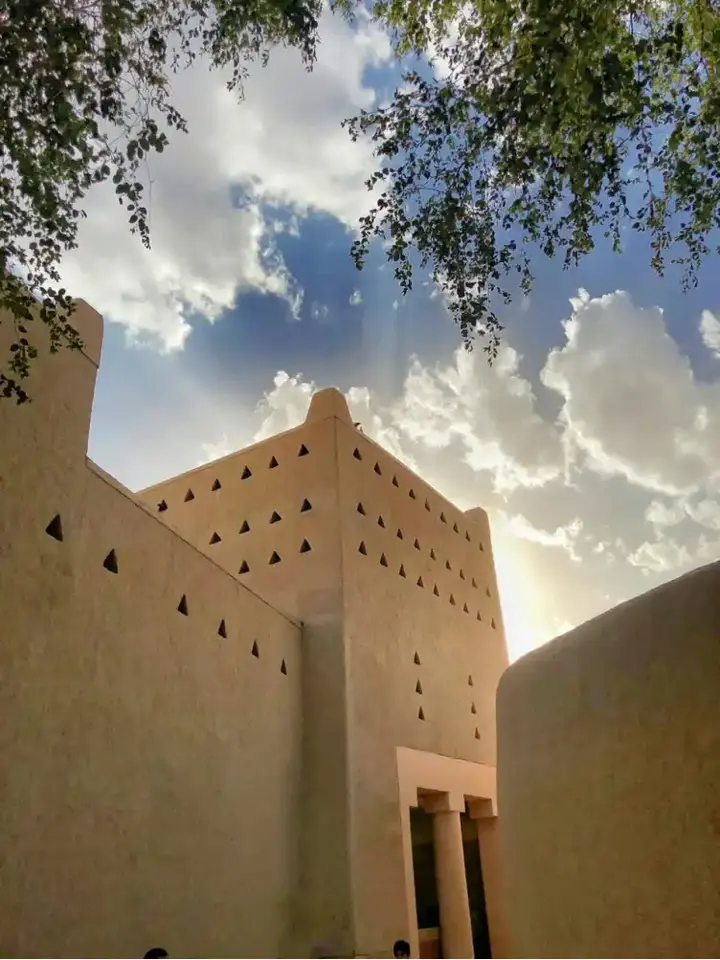Masmak Palace Riyadh's Historical Icon
In the middle of the nineteenth century AD, specifically in 1865, the construction of the Masmak Palace "or Al-Masmak Fort" began during the reign of Imam Abdullah bin Faisal bin Turki Al Saud in the heart of Riyadh, which has since become a historical symbol of the founding of the Kingdom because of its symbolic role in stabilizing the pillars of the Saudi state over the 158 years since its construction until now. At the beginning of his reign, Masmak Palace was the residence of the Emir and a center for Bayt al-Mal, and it has not been absent from the scene since its establishment until now, as it has turned into a historical and archaeological icon visited by thousands of tourists and citizens throughout the year to see the symbol of the unification of the Kingdom of Saudi Arabia and its contents from the inside and enjoy the simplicity and beauty of the exterior design and its effective security role that harmonizes with the desert environment familiar to the Arabian Peninsula.
Recommend
Show key points
- Masmak Palace, built in 1865 during the rule of Imam Abdullah bin Faisal bin Turki Al Saud, played a critical role in solidifying the foundations of the Saudi state.
- Initially serving as the Emir's residence and the center of Bayt al-Mal, the palace has remained a significant landmark throughout 158 years of Saudi history.
- The structure got its name from its thick, high walls—over 20 feet tall—and its construction using mud mixed with hay and stone.
- ADVERTISEMENT
- Architecturally, the palace features four conical towers about 18 meters high, connected by protective walls and enclosing key elements such as a mosque, diwaniya, and central courtyard.
- Its western gate, made of palm trunks and trees, includes a uniquely designed narrow opening known as "Al-Khokha," which still bears a spearhead from a historic battle.
- The Diwaniya or council hall inside the palace reflects traditional Najdi design, complete with a central fireplace and strategically placed ventilation holes.
- A crucial feature of self-sufficiency, the palace's internal well provided water that enabled its occupants to endure prolonged sieges.
The reason for naming Masmak Palace by this name

The origin of the Masmak Palace or the fortress of Al-Masmak with this name is due to its fish and high walls that reach more than 20 feet, and we find that the bases of the fort are made of stones that have been clad from the inner and outer sides with a thick layer of mud mixed with hay, while its internal columns and door entrances have been covered with a layer of plaster.
The exterior of the Masmak Palace
Masmak Palace consists of 4 conical towers in its four corners, each with a height of approximately 18 meters, and contains small triangular holes and holes for ventilation, and each tower had its own staircase and a wooden Salman, and these four towers are connected to each other by a 20-foot-high wall that embraces inside the palace's internal elements of a mosque, a diwaniya, a well and a number of rooms that surround an open internal courtyard.
Masmak Palace Gate
The palace has an entrance in the western wall with a height of three and a half meters, a width of two and a half meters, and the thickness of the gate is almost ten centimeters. The gate consists of three beams with a thickness of 25 centimeters each. The gate is made of palm trunks and trees, and the gate has an opening in its center called "Al-Khokha", and it can only accommodate the passage of one person while it is curved, so it was used as a small gate. This small gate witnessed one of the episodes of battles between King Abdul Aziz and his opponents, and you find a spearhead that is still stuck in the small gate until now.
Council of the "Diwaniya" of Masmak Palace
When crossing from the palace gate, you will find directly in front of you the Majlis or Diwan inside the palace, which has a traditional rectangular shape in the middle of which is "Wajar", which is the traditional fireplace in Najd, and we can see the ventilation and lighting holes in the western wall of the Diwaniya, and on the southern side also that overlooks the palace courtyard.
Masmak Palace Well

The self-sufficiency of the Masmak Palace was one of its most important advantages, as the presence of a water well inside it was one of the most important reasons for the ability of the fighters inside it to withstand for a long time. The well is located on the northeast side of the palace, and water was extracted from it with a bucket and a wellhead mounted on the wellhead








